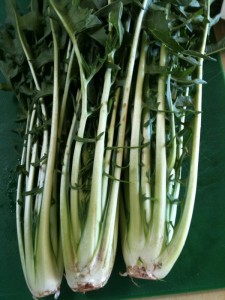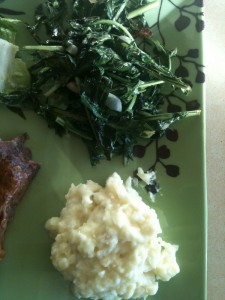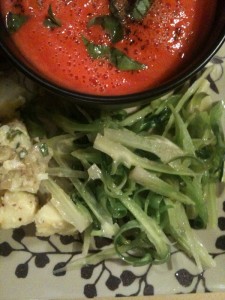The original story of Rapunzel involves a plant called rampion. This is the plant that the pregnant woman sees in her neighbor’s yard and for which she longs uncontrollably. She says things like, “I will die if I can’t eat some of that rampion.” So her husband steals some for her. Still, she is not satisfied. More theft ensues. The neighbor, unfortunately, is a witch, who catches the vegetable thieves. The witch promises the unhappy couple all the rampion the wife desires in return for the unborn child. Thus, the eponymous Rapunzel. Thus the tower and the hair and the unfortunate blind prince and all those years in the wilderness. I wonder a little if the title of this tale refers to the little girl and her unfortunate fate or to the addictive plant which led to the illicit activity that led to her miserable life. Rapunzel may be the first child in literature traded for a vegetable. Or her mother’s cravings. Or she may be evidence that the husband loved the wife more than the unborn daughter.
I am not announcing here that I am pregnant (I am not.) Nor am I writing about rampion. Nor even about weird things that pregnant women eat. The story of Rapunzel has been obsessing me lately because it is puntarelle season here, and puntarelle makes me crazy. As in Rapunzel’s mother crazy. I would not say that puntarelle is my favorite food. In fact, I forget about it completely 10 months out of the year, and then one Sunday–bam!–there it is and I am completely unable to control myself. I cannot get enough of it. I hoard it and spend hours preparing it. I eat bowls of it all day long. I might even steal it out of a witch’s yard.
Three bunches of puntarelle, unprepared. I ate 2 by myself. The other I shared.
Puntarelle is in the chicory family. It has long, serrated leaves like dandelion, a pale white, tender interior, and alien looking spikes that are hollow inside. It is bitter. It is so bitter that my kids won’t touch it. Kory likes it, but not as much as I do. I like this arrangement. There’s more for me.
It’s an odd, slightly time-consuming vegetable to prepare. First, I chop or strip off the dark green leaves. These can be tossed raw into a salad if you like bitter things. Or you can chop them and sautee them in olive oil with some salt, and carmelized onion or shallot or garlic. You can squeeze a bit of lemon over it. The leaves are tender crisp and slightly bitter and the very best green I’ve ever eaten.
Puntarelle is on the top. Paired with braised beef and smashed celery root and potatoes.
The core and the spikes and the pale white bits take more work. These you slice into the thinnest slivers you can imagine,then you set them in a bowl of ice water. Leave it over night in the refrigerator, and in the morning they will be gently curled, crisp tendrils. Think lovely little curls of tender bitter greens. Like celery with a pedigree. These you drain, dry and dress with a classic vinaigrette of:
- garlic clove smashed with coarse salt
- smashed anchovy (from a glass jar)
- lemon juice or lemon juice and red wine vinegar in equal amounts
- olive oil (twice as much as juice/vinegar)
Puntarelle salad with garlic and anchovy dressing. Paired with gazpacho and country potato salad.
But since puntarelle is really hard to find, if the idea of fresh, crisp, lovely curled salad appeals to you, you can do exactly the same thing with celery, and then you get much of the deliciousness and none of the bitterness. This celery variation is one my kids love. In fact, I made it for years before I discovered puntarelle. And the minute I learned how to prepare punterelle I knew that this Celery Salad with Anchovy Vinaigrette from Food and Wine must have been adapted from a classic puntarelle preparation. It’s not quite as addictive as the puntarelle version, but it’s pretty close. And you won’t have to worry about witches. At least until the end of the month.



